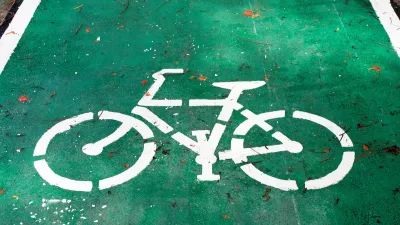On Metropolis P.O.V., Jared Green interviews Mayor Mick Cornett to uncover the keys to Oklahoma City's surprising success.
Now in his third term as Mayor, Mick Cornett, admits that Oklahoma City has not always been the kind of place you wanted to show off to visitors. "The decade of the 1980s was just a horrible time in the state of Oklahoma and a pretty gloomy time in Oklahoma City," Cornett says. An entire generation of leadership was lost to Texas and coastal cities when they couldn't, or didn't want to, find jobs in Oklahoma City.
Improvements began in the 1990's, when the region passed a limited penny tax to finance the MAPS Initiative (Metropolitan Area Projects). The original goal was to improve the quality of life for existing residents, but 20 years later Oklahoma City finds itself attracting new business and residents. People from California, Texas and the east coast are finding their way to OKC, Cornett says. "Now we're attracting that human capital. That's going to be the key to economic development because no longer do people follow jobs. Jobs follow people. We're succeeding now because we're attracting the top human capital available."
Cornett credits Oklahoma City's ongoing success, simply, with increasly high standards. Standards for health (he famously put OKC on a diet in 2007), standards for landscape and design, and standards for business. Describing the city's efforts to improve walkability and create vibrant public spaces, Cornett points out:
"When the city developed higher standards...what you see is that the businesses in the community want to reflect those standards or maybe even exceed them. So it feeds on itself. When you have a city of low standards you're going to have businesses that exude that same quality."
Thanks to Jessica Brent
FULL STORY: Q&A: Mayor Mick Cornett

Maui's Vacation Rental Debate Turns Ugly
Verbal attacks, misinformation campaigns and fistfights plague a high-stakes debate to convert thousands of vacation rentals into long-term housing.

Planetizen Federal Action Tracker
A weekly monitor of how Trump’s orders and actions are impacting planners and planning in America.

San Francisco Suspends Traffic Calming Amidst Record Deaths
Citing “a challenging fiscal landscape,” the city will cease the program on the heels of 42 traffic deaths, including 24 pedestrians.

Defunct Pittsburgh Power Plant to Become Residential Tower
A decommissioned steam heat plant will be redeveloped into almost 100 affordable housing units.

Trump Prompts Restructuring of Transportation Research Board in “Unprecedented Overreach”
The TRB has eliminated more than half of its committees including those focused on climate, equity, and cities.

Amtrak Rolls Out New Orleans to Alabama “Mardi Gras” Train
The new service will operate morning and evening departures between Mobile and New Orleans.
Urban Design for Planners 1: Software Tools
This six-course series explores essential urban design concepts using open source software and equips planners with the tools they need to participate fully in the urban design process.
Planning for Universal Design
Learn the tools for implementing Universal Design in planning regulations.
Heyer Gruel & Associates PA
JM Goldson LLC
Custer County Colorado
City of Camden Redevelopment Agency
City of Astoria
Transportation Research & Education Center (TREC) at Portland State University
Jefferson Parish Government
Camden Redevelopment Agency
City of Claremont





























